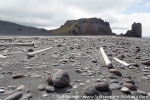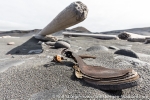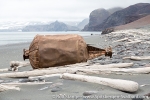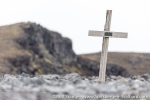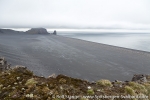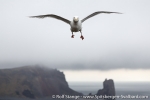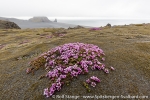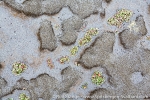-
current
recommendations- Liefdefjord
New page dedicated to one of Spitsbergen's most beautiful fjords. Background information and many photos.
- New Spitsbergen guidebook
The new edition of my Spitsbergen guidebook is out and available now!
- Liefdefjord
New page dedicated to one of Spitsbergen's most beautiful fjords. Background information and many photos.
Seitenstruktur
-
Spitsbergen-News
- Select Month
- April 2024
- March 2024
- February 2024
- January 2024
- December 2023
- November 2023
- October 2023
- September 2023
- August 2023
- July 2023
- June 2023
- May 2023
- April 2023
- March 2023
- February 2023
- January 2023
- December 2022
- November 2022
- October 2022
- September 2022
- August 2022
- July 2022
- June 2022
- May 2022
- April 2022
- March 2022
- February 2022
- January 2022
- December 2021
- November 2021
- October 2021
- September 2021
- August 2021
- July 2021
- June 2021
- May 2021
- April 2021
- March 2021
- February 2021
- January 2021
- December 2020
- November 2020
- October 2020
- September 2020
- August 2020
- July 2020
- June 2020
- May 2020
- April 2020
- March 2020
- February 2020
- January 2020
- December 2019
- November 2019
- October 2019
- September 2019
- August 2019
- July 2019
- June 2019
- May 2019
- April 2019
- March 2019
- February 2019
- January 2019
- December 2018
- November 2018
- October 2018
- September 2018
- August 2018
- July 2018
- June 2018
- May 2018
- April 2018
- March 2018
- February 2018
- January 2018
- December 2017
- November 2017
- October 2017
- September 2017
- August 2017
- July 2017
- June 2017
- May 2017
- April 2017
- March 2017
- February 2017
- January 2017
- December 2016
- November 2016
- October 2016
- September 2016
- August 2016
- July 2016
- June 2016
- May 2016
- April 2016
- March 2016
- February 2016
- January 2016
- December 2015
- November 2015
- October 2015
- September 2015
- August 2015
- July 2015
- June 2015
- May 2015
- April 2015
- March 2015
- February 2015
- January 2015
- December 2014
- November 2014
- October 2014
- September 2014
- August 2014
- July 2014
- June 2014
- May 2014
- April 2014
- March 2014
- February 2014
- January 2014
- December 2013
- November 2013
- October 2013
- September 2013
- August 2013
- July 2013
- June 2013
- May 2013
- April 2013
- March 2013
- February 2013
- January 2013
- December 2012
- November 2012
- October 2012
- September 2012
- August 2012
- July 2012
- June 2012
- May 2012
- April 2012
- March 2012
- February 2012
- January 2012
- December 2011
- November 2011
- October 2011
- September 2011
- August 2011
- May 2011
- April 2011
- March 2011
- February 2011
- January 2011
- December 2010
- November 2010
- September 2010
- August 2010
- July 2010
- June 2010
- May 2010
- April 2010
- March 2010
- February 2010
- November 2009
- October 2009
- August 2009
- July 2009
- June 2009
- May 2009
- April 2009
- March 2009
- February 2009
- January 2009
- December 2008
- November 2008
- October 2008
- August 2008
- July 2008
- June 2008
- May 2008
- April 2008
- March 2008
- February 2008
- April 2000
- Select Month
-
weather information

| THE Spitsbergen guidebook |
Home →
Daily Archives: 20. June 2016 − News & Stories
Haugenstranda – 20th June 2016
Mon
20 Jun
2016
The return to basecamp last night was great, everybody had stories to tell around a big casserole of Icelandic lamb stew. Anneli and Martin have reached the peak of Beerenberg together with mountain guide Magnus. Well done, congratulations!
Beyond this, everybody has explored the north extensively with most of the sites of interest over there. And as I came now stumbling back into the mess tent as the last mohican, everybody wanted to know what I had seen and experienced in the south.
After the many kilometres of the last days, my lower half demanded a calmer day. Initially I took the luxury of just being lazy for a couple of hours, before I put a little daypack together for a good beach walk. Walking along Haugenstranda to its end had been on my wishlist for a long time. It is stretching for 3 kilometres northeast from Kvalrossen, initially being very wide, getting narrower further north. It is covered with immense amounts of driftwood, something that is always interesting.
Slowly I walk between the various bits and pieces, wondering where they may have come from. As in Spitsbergen, most of the logs are cut, only a few have roots. Also the Jan Mayen driftwood has mostly made the long drift from Siberia across the Arctic Ocean. Only in a few cases, larger holes of boreworms indicate an origin in more temperate waters.
Unfortunately, the unavoidable plastic trash is to be found also here in volumes. Largely items from the fishing industry, but a lot of weird stuff as well, from hygiene articles over shoes to objects that I can not identify. A shame that tourists are not allowed anymore to make landings in places like this. They like to clean a beach, as everybody knows who has been following this blog for a while. As it is, the plastics just remain here on the arctic beaches. Well done, Oslo.
At the end of the beach, there is a lonesome grave on a little elevation. The metal plate on the wooden cross says Sivert Eide 1909. Sivert was member of the second group of Norwegian trappers who had come to Jan Mayen to overwinter and hunt polar foxes. They had mainly used the Austrian station in Maria Muschbukta, but additionally built a hut here at Haugenstranda. Sivert died here at Haugenstranda of scurvy in February 1909. The storms have not left anything of the hut, just some rusty remains of the stove and some wooden planks tell the careful observer where a wall once may have been.
Gallery 1 – Haugenstranda – 20th June 2016
- gallery anchor link: #gallery_939
Click on thumbnail to open an enlarged version of the specific photo.
The way back leads me over a ridge of low hills called Lågheia, which is separating the coasts to either side of Mid Jan. Just a few metres of elevation change the perspective greatly and allow scenic views over Haugenstranda, while saxifrages and moss campion delight the eye with colour patches on the ground. Aggressive glaucous gulls attack the wanderer fiercely. More than the birds, a light rainshower makes him set course back to Kvalrossbukta. Neumayerkrater, a volcanic crater that might have been a nice extra walk in this area, is shrouded in deep, grey clouds this time.
Various soil and vegetation structures tell a clear story about the ferocious winds Jan Mayen is so renowned for. Today, there is just a light, steady breeze blowing over the volcanic hills.
Gallery 2 – Haugenstranda – 20th June 2016
- gallery anchor link: #gallery_940
Click on thumbnail to open an enlarged version of the specific photo.
The wind, light and constant as it was up on the ridge, is falling down in strong gusts into Kvalrossbukta, quickly calming down again just to take a rest to gather strength for the next attack. During the night, we all have to get out of our sleeping bags to secure the mess tent with more stones and driftwood before it starts to take of for a flight over Jan Mayen.
News-Listing live generated at 2024/April/20 at 07:09:37 Uhr (GMT+1)

